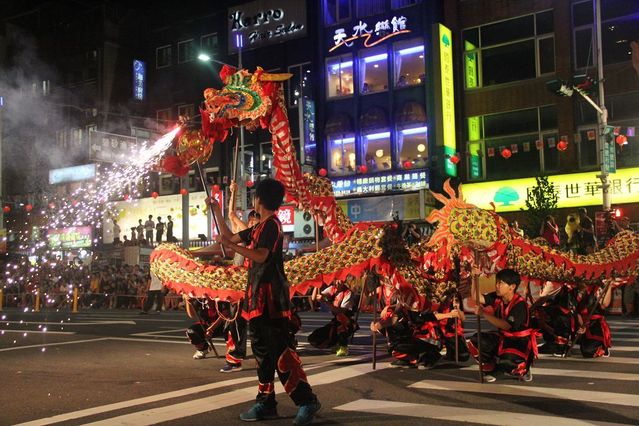
Keelung Mid-Summer Ghost Festival
Keelung Mid-Summer Ghost Festival is one of the 12 major festivals designated by the Tourism Bureau. It started in the Qing dynasty when immigrants from Fujian settled Keelung. Because of disagreements over ancestral origins, they clashed over business, land, plowing, customs, and beliefs, leading to armed conflict, heavy casualties, and hostility. In 1853, a great battle was fought at Hangding (present-day Nanrong Cemetary), with over a hundred casualties.
On the verge of another conflict, elders and leaders from either side negotiated a truce. Bodies of the dead were referred to as “Lao Da Gong,” and they were buried and worshipped. Based on their surname, people took turns negotiating. These were the 11 families of Keelung, which took turns organizing the Ghost Festival. Family relationships replaced ancestral hometowns as the basis for ties, bringing together the two sides which took turns organizing the festival and offering to lonely spirits. Parade competition replaced armed conflict to preserve the peace.
The Mid-Summer Ghost Festival begins on the first day of the seventh lunar month, when Lao Da Gong Temple opens Kanmen, and over the next 12 days the lanterns are lit and colored thread released on Zhupu altar. The Ying Dou Deng procession takes place on the 13th day, the water lantern procession by the seashore on the 14th, the Ghost Festival ceremony on the 15th, and finally comes the Jumping Zhong Kui and Opening Kanmen, on the first day of the 8th month. The entire period lasts a month, and is similar to the Western world’s Christmas or Japan’s Night Parade of a Hundred Demons. Each ceremony has a historical and folk culture signficance, and over the last few years culture and art aspects have been integrated with the traditional ceremony. These aspects include art exhibitions and famous groups from Taiwan and abroad. We hope that the Ghost Festival will increase solidarity and mutual blessing among the people of Keelung.